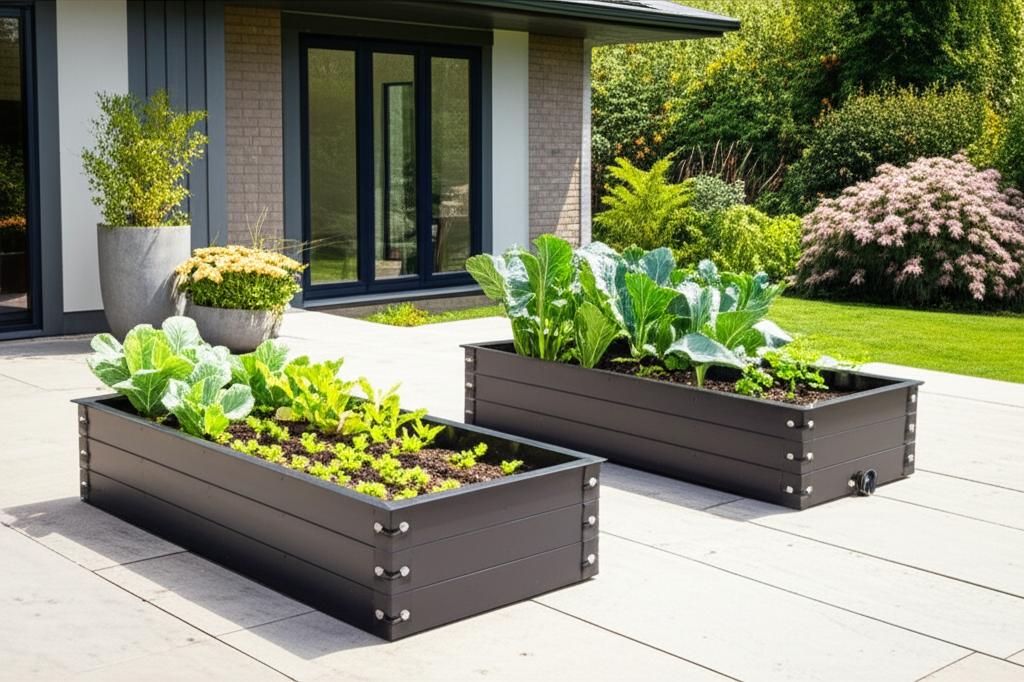Snap-Together Garden Beds: Quick Assembly for Modern Home Gardens
Modular snap-together garden beds represent a significant advancement in home gardening for 2025, as they simplify the process of creating productive outdoor spaces. Homeowners who seek efficient solutions find these systems transform ordinary yards into thriving gardens with minimal effort. This approach eliminates the need for complex construction, and it allows users to focus on planting rather than building.
Understanding Modular Snap-Together Garden Beds
These innovative systems consist of interlocking panels that form sturdy raised beds through simple connections. Manufacturers design them with materials such as high-density polyethylene or wood-plastic composites, which provide strength without excessive weight. Users connect the panels using built-in clips or slots, and the entire structure assembles in under 60 minutes for most standard sizes.
Standard configurations include beds measuring 4 feet by 4 feet at heights of 8 to 12 inches, though expansion kits allow for custom dimensions up to 8 feet long. This flexibility accommodates various garden layouts, from compact herb patches to extensive vegetable plots. Gardeners appreciate how these beds elevate soil above ground level, which improves drainage and reduces weed intrusion.
Reasons Homeowners Select Modular Systems
Many homeowners choose modular snap-together garden beds because they address common challenges in traditional gardening setups. These systems require no power tools or woodworking expertise, which makes them accessible to beginners and experienced gardeners alike. In addition, their modular nature supports easy modifications as gardening needs evolve over time.
Key benefits include exceptional durability against environmental factors; composite materials withstand UV exposure, moisture, and temperature fluctuations far better than untreated wood. This resistance extends the bed's lifespan to 10 years or more, reducing long-term maintenance costs. Furthermore, the uniform design creates an attractive, organized appearance that enhances yard aesthetics.
Evaluating Cost and Long-Term Value
Initial investments for modular garden beds typically range from 80 dollars for basic 4-foot by 4-foot kits to 350 dollars for larger, multi-tiered options with premium features. While this exceeds the cost of simple lumber construction, the value emerges through time savings and reduced replacement needs. Gardeners avoid the expense of new materials every few seasons, as these beds maintain their integrity without rotting or splintering.
Consider the return on investment: a durable bed supports multiple growing cycles, potentially yielding hundreds of dollars in homegrown produce annually. For those with limited time, the quick assembly translates to immediate gardening productivity rather than days spent on construction.
Step-by-Step Setup Process
Setting up a snap-together garden bed follows a clear sequence that most users complete efficiently. Begin by selecting a level area with adequate sunlight, at least six hours daily for optimal plant growth. Clear debris and ensure the ground is even to provide a stable base.
Next, unpack the kit and connect panels starting with the corners; align the interlocking mechanisms and press firmly until they click into place. Verify the frame's squareness by measuring diagonals, then add any optional liners such as biodegradable fabric to suppress weeds. Fill the bed with a balanced soil mixture, incorporating equal parts topsoil, compost, and perlite for improved aeration and nutrient retention.
Weighing Advantages and Limitations
Modular systems offer numerous advantages that make them a practical choice for contemporary gardens. They enable rapid deployment, with assembly times often under 30 minutes for smaller units, and their expandable design accommodates growing ambitions without starting over. Materials provide natural pest resistance, and the portability allows relocation to follow sun patterns or yard changes.
However, potential drawbacks include higher initial costs compared to DIY wood options, and size limitations based on available kit components. In extremely large configurations, panels might flex under heavy soil loads, though reinforcements are available. In hot regions, dark-colored materials can absorb heat, so lighter shades or shade cloth help protect plant roots.
Ideal Applications for These Garden Beds
Snap-together beds excel in scenarios where simplicity and adaptability matter most. Beginner gardeners benefit from the straightforward assembly, which builds confidence through quick success. In small urban spaces or rental properties, their lightweight construction and easy disassembly prevent permanent alterations to the landscape.
Families value the smooth, splinter-free surfaces that ensure safety for children helping in the garden. For patio or courtyard settings, these beds integrate seamlessly with modern designs, supporting container-like growing without the weight of traditional pots.
Essential Maintenance Practices
Maintaining modular garden beds involves minimal effort to preserve their condition over years of use. Inspect connections seasonally and tighten any loose fittings to maintain structural integrity. Clean panels with mild soap and water to remove accumulated dirt, which prevents mold growth and keeps the appearance fresh.
If damage occurs, replace individual panels rather than the entire unit, which minimizes waste and cost. This modular repair approach extends the system's usability far beyond that of conventional beds.
Strategies to Maximize Your Modular Garden
To achieve the best results, begin with a single bed to assess soil conditions and sunlight in your specific location. Position it near irrigation sources to simplify watering routines, and select a soil blend rich in organic matter for robust plant health. Incorporate vertical elements like attachable trellises to increase growing space for vining crops such as tomatoes or beans.
Implement crop rotation by dividing the bed into sections and alternating plant families each season, which prevents soil depletion and reduces disease risks. Monitor moisture levels with simple probes to avoid overwatering, and mulch the surface to retain humidity and suppress weeds.
Conclusion: Embrace Efficient Gardening
Snap-together garden beds provide an effective solution for creating versatile, long-lasting garden spaces without traditional construction hassles. They offer immediate accessibility for all skill levels, with designs that adapt to changing needs and environments. Homeowners who invest in these systems discover enhanced gardening success through their combination of convenience, durability, and aesthetic appeal.
